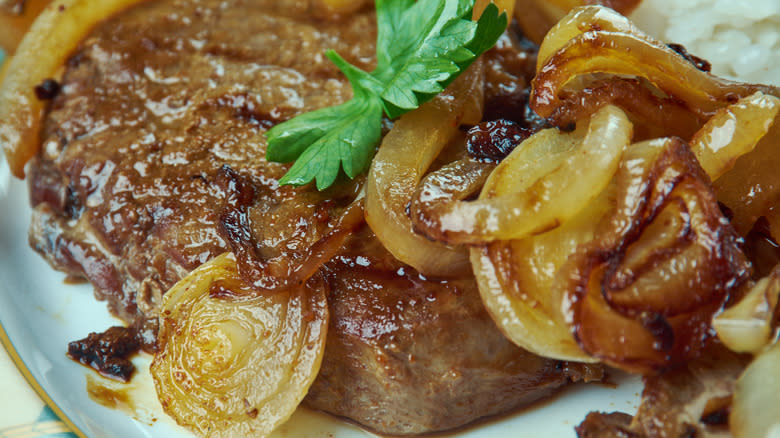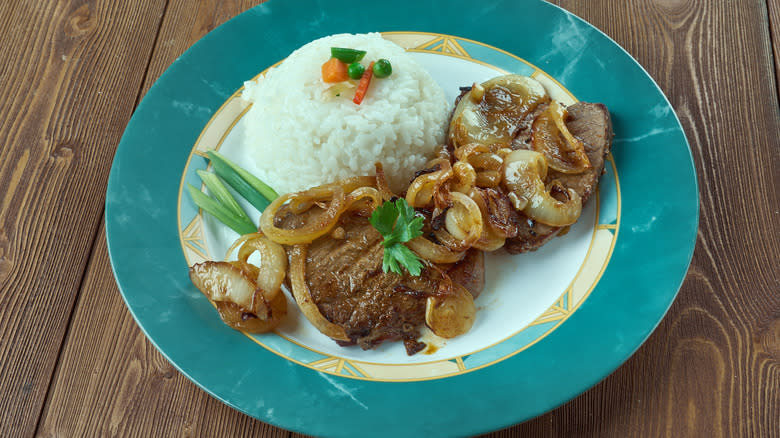Palomilla Steak Is The Hearty Cuban Dish Slathered In Sauteed Onions

When it comes to Cuban cuisine, the bistec de palomilla stands out as a savory testament to the island's rich culinary heritage. The dish is a veritable symphony of flavor notes combining rich beef, a bright marinade, and achingly tender, sweet, sauteed onions. It is, like so many beloved foodstuffs, deceptively simple in concept and execution, but triumphantly received on the palate.
A dish that marries bold flavors with a touch of finesse, bistec de palomilla starts with an affordable, yet notoriously tough cut of beef, often a round steak or sirloin. The meat is transformed into a tender delight by way of butterflying — palomilla translates to "butterfly" in Spanish — and the generous use of a pronged meat mallet. Further, the steak is saturated in a striking marinade, a crucial element in the dish's flavor profile, typically comprised of garlic, lime juice, salt, and pepper, though sour orange juice and oregano are sometimes added. The result is a piquant and robust marinade that balances the umami-forward beef.
But the signature crowning glory of the dish is a generous serving of caramelized sweet onions, adding a mellow and savory dimension that perfectly complements the boldness of the steak. The nearly melted onions cooked down in oil or butter prove the perfect stand-in for a sauce and offer contrasting texture to the round steak.
Read more: The Most Popular Cuts Of Steak Ranked Worst To Best
A Tough Steak Transformed

Where did bistec de palomilla come from? As with so many rustic dishes, the origin story is lost to time. Likely the dish has no single jumping off point, but was the result of industrious cooks pulling together affordable and readily available ingredients. Bistec de palomilla then passed from kitchen to kitchen becoming somewhat codified in the process. Though now a staple of Cuban restaurants abroad, the sad irony is that beef is a rare and expensive foodstuff for most Cubans.
Almost equally as important as the steak in bistec de palomilla are the onions. Though there are a plethora of varieties to choose from, most recipes call for the ubiquitous Spanish yellow onion, a kitchen workhorse that shines best when cooked down to mute its more pungent raw elements. If you'd like to up the sweetness factor, feel free to grab a variety such as Vidalia that caramelizes a bit more extensively.
The harmonious balance of textures and tastes is further enhanced by the traditional accompaniments often served alongside bistec de palomilla. Plantains, or maduros, provide a sweet counterpoint to the savory steak, while "moros y cristianos," a classic combination of black beans and rice, adds a hearty element to the plate. This symphony of flavors showcases the versatility and ingenuity of Cuban cuisine, where affordability meets culinary excellence.
Read the original article on Tasting Table.

